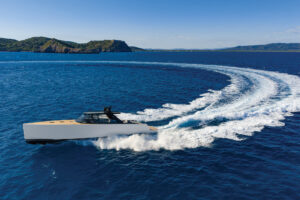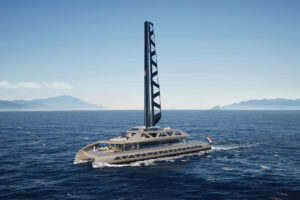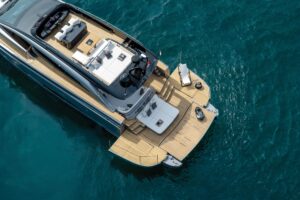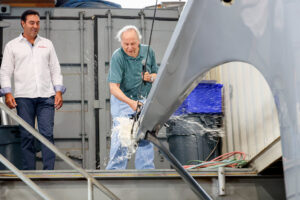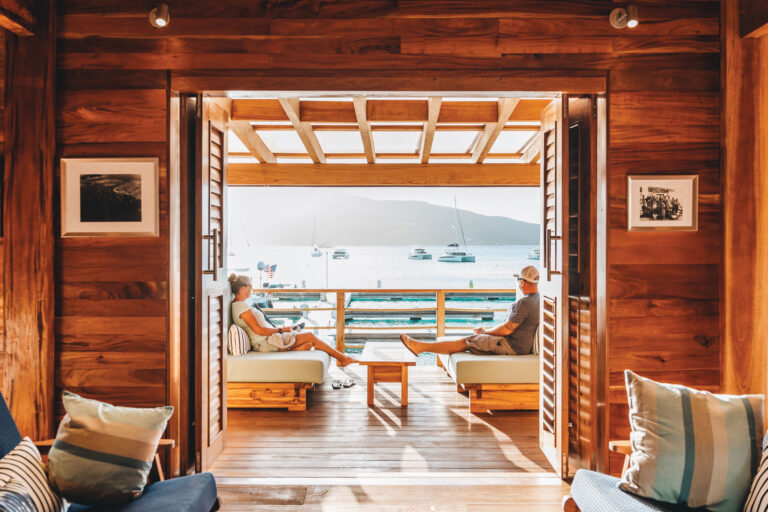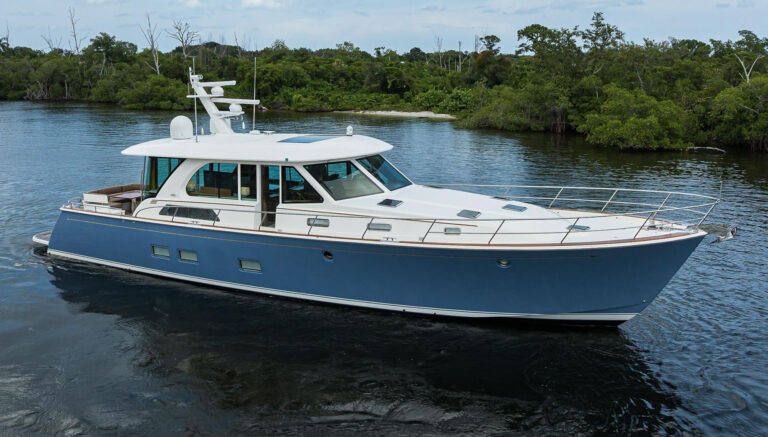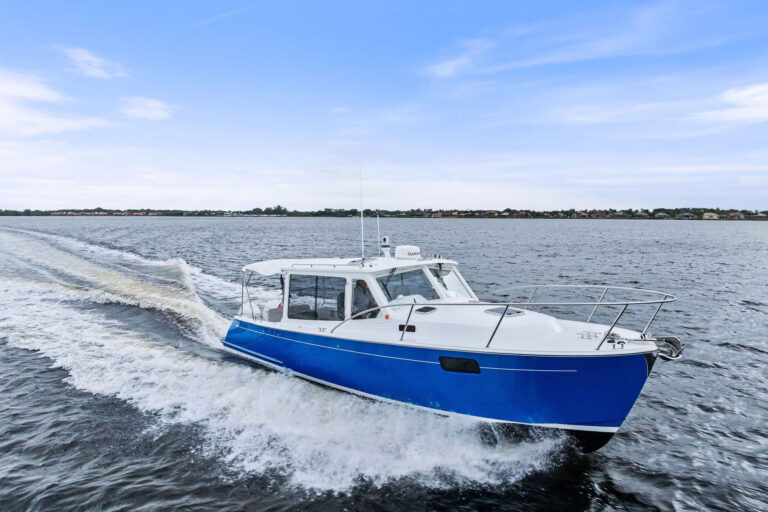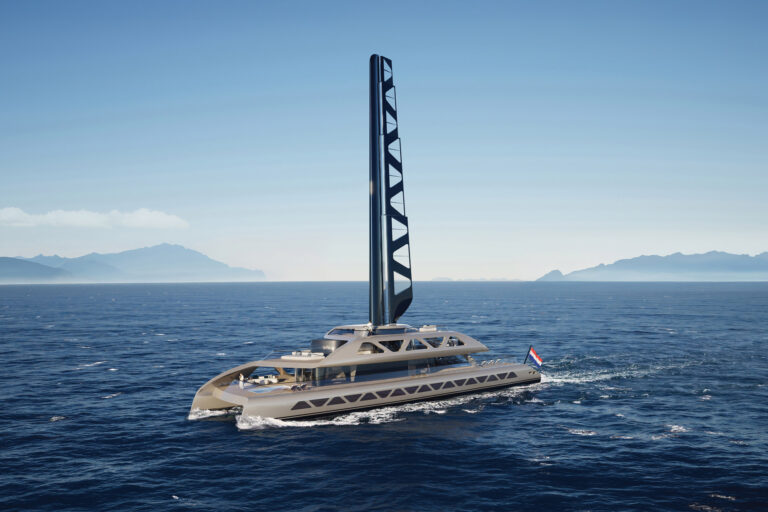
Today, the one thing boat buyers expect above all else is volume, and consequently, boats have been getting imperceptibly bigger. While a yacht’s true length overall may be the same as or even slightly smaller than the LOA of a previously produced model, the interior space on the newer version is usually larger. Sunseeker‘s Manhattan 66 is a perfect example. The British builder had a model in production with the same designation until just over 10 years ago, which makes for a convenient, direct comparison with the new Manhattan 66, which was introduced earlier this year.

Of Giants and Genius
Port Adriano, Mallorca, where we tested the Sunseeker Manhattan 66, is modern with open-terrace bars and restaurants. The harbor and quays are lined with lounge furniture on steroids: table lamps, potted plants and concrete picture frames that outsize everything around them. This place looks like it would need a giant to clean it with a 10-foot feather duster. Philippe Starck designed the complex. His creations, on land or at sea, usually elicit strong reactions. I used to think unkindly of his 390-foot Blohm+Voss motoryacht A, which, in profile, looks like an upside-down sailboat hull from the 1970s. Then I saw his next creation, the three-masted 469-foot Nobiskrug sailing yacht A, which makes the average aircraft carrier look positively dainty.
Old and New
Our test boat, Rush, is Hull No. 2 of the Manhattan 66, and her owner used to have the previous model. His old Manhattan 66 measured 45.6 gross tons. The new 66 delivers 47.5 gross tons. It may not sound like much, just about 4 percent more, but owners notice it where it counts.
“Space is certainly used much more efficiently today, and particularly as regards detail design,” says Sean Robertson, Sunseeker’s sales and marketing director. “For instance, nothing is allowed to impinge on headroom throughout, and wherever possible, protuberances have been kept outboard rather than inboard and to a minimum. And all equipment aboard is always hidden as unobtrusively as possible.”
The salon and flybridge on this 66 each deliver 27 square feet more space than the yacht’s predecessor. That is a heck of a lot, but it’s nothing compared with the accommodations gain on the lower deck. The difference there is 86 square feet, principally because the engine room is smaller and farther aft, and because the new hull form is more fulsome. The earlier 66 was longer at the waterline and overall, but her beam and displacement were a little less.
Compared with the earlier model, the new 66 also has bigger engine and generator options, and more fuel aboard while carrying slightly less water.
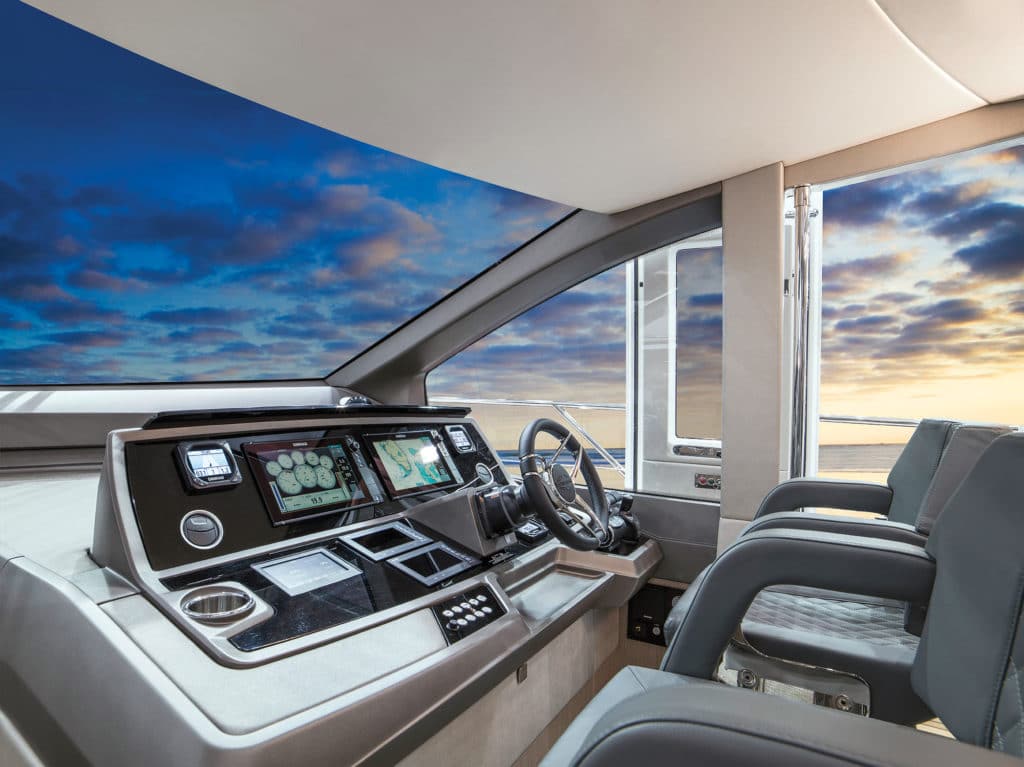
Choice Propulsion
Of the 40 Manhattan 66s that were sold by early summer, the first 20 or so were specified with twin 1,000 hp or 1,200 hp MAN V-8 diesels. There is also a pod-drive option: twin 900 hp Volvo Penta IPS1200s. The first 66 to get those is expected to be Hull No. 27, later this year.
The base price for twin 1,000 hp or 1,200 hp MANs was about $2 million and $2.1 million, respectively, at press time.
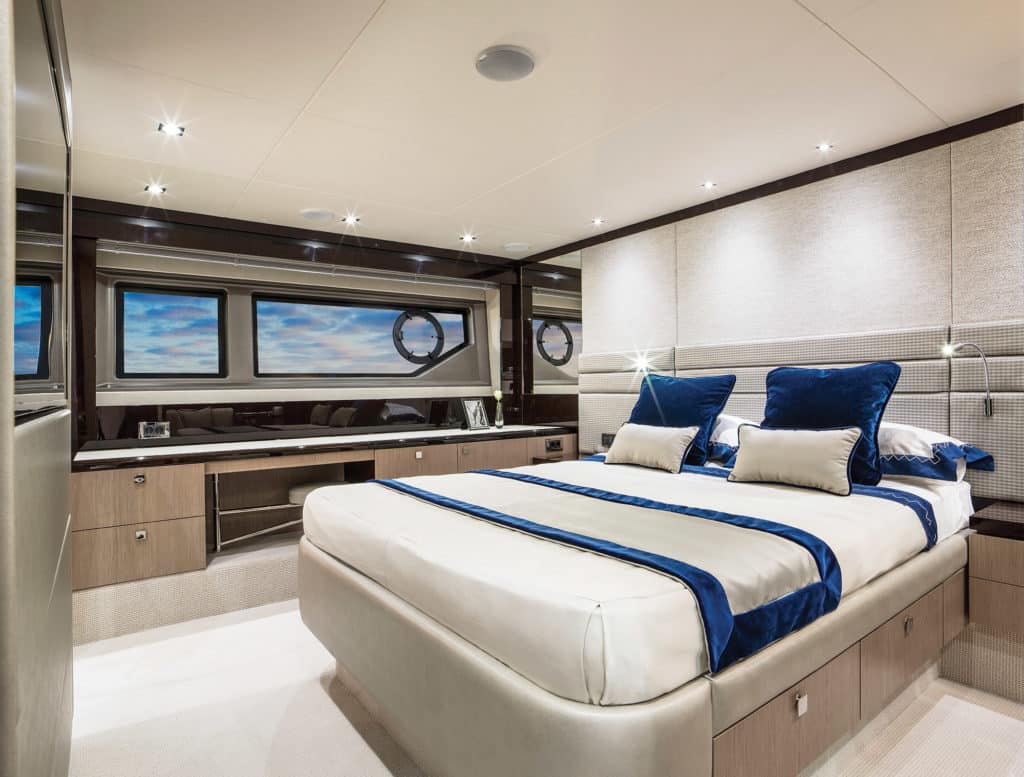
Cruising Heaven
Mallorca, in Spain’s Balearic Isles, is beautiful during April. The season hasn’t started, which means no crowds, and it’s not too hot despite a cloudless sky — glorious for our test of Rush, which has the 1,200 hp MANs. She topped out at 31 knots in just a slight breeze and calm seas while running heavy; her fuel tanks were three-quarters full, her water tank was full, and she had a Williams 325 Turbojet tender strapped to her swim platform. (Owners could fit a Williams 385 Turbojet on there.)
Half-loaded, the builder says, she’s good for 32 to 33 knots at the diesels’ maximum 2,300 rpm. A brisk, continuous cruise would mean diesels spinning between 1,800 and 2,000 rpm, which translates to around 24 or 25 knots and a range of about 350 nautical miles.
For those with time to spare, engines spinning at no more than 1,200 rpm means 40 hours at about 11 knots and a range of almost 450 nautical miles. Sunseeker advertises a range of 550 nautical miles at 10 knots.
Must-Haves
Some of the big options for the Manhattan 66 include a hardtop, a Xenta Smart-Stick docking system and a Side-Power Vector fin-stabilizer system.
350 nautical miles & max cruising range at 25 knots
Of some 40 Manhattan 66s sold at the time of this writing, only two were sold without hardtops, principally because of air-draft considerations. One was bound for the inland waterways of the Netherlands, and the other was heading to the Great Lakes, where a low bridge near Chicago also demands a fold-down radar arch. I love the look of the Manhattan 66 without the hardtop, but owners would never get the most use out of the flybridge without one.
All the glass that’s visible in the exterior design allows for great views from inside, and the galley aft can be ordered with an island option, which provides more stowage and an extra work surface. To date, four 66s have been sold with that option. With the aft doors retracted, plus the optional aft-deck bar on Rush, the galley feels like it’s two-thirds inside and one-third outside.
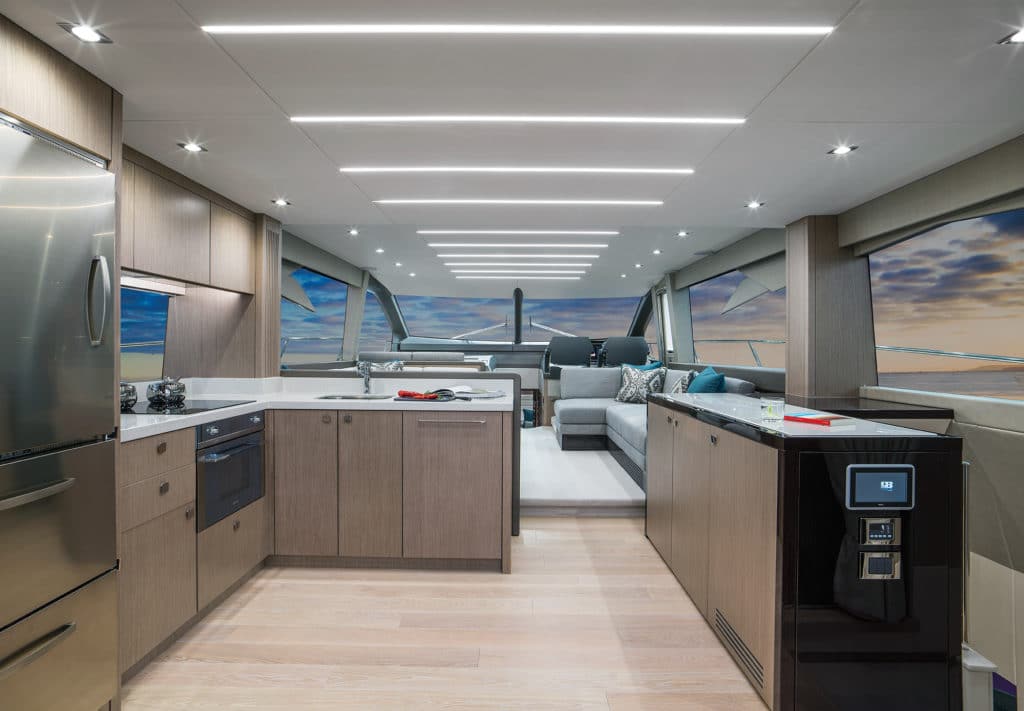
A Little Distance
The owner’s stateroom is amidships and has its own staircase from the starboard quarter of the main salon, just across from the galley. This arrangement enhances the big-boat feel, and I like it because I appreciate a little distance from my guests come bedtime. There’s also plenty of sound insulation between the owner’s stateroom and the three guest staterooms.
The staircase has a degree of novelty, not least because most series builders shy away from them, but also because they’re usually more costly to build.

